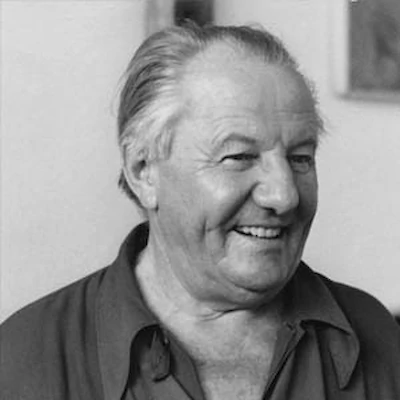Hans Hofmann
The sublime takes decades




There’s an undeniable element of brand-building to making a name in the art world. You experiment at first, try idea after idea and when something finally sticks, you double down. Iterate, refine, and repeat until it becomes your thing—an instantly recognizable calling card. Roy Lichtenstein had his comic panels, Giorgio Morandi his bottles, Chagall his dreamlike watercolors. But what happens if you never settle down and choose a style, a medium or subject matter? The art world struggles with the mercurial, and evolving artists are often overlooked. Let’s talk about Hans Hofmann.
When you hear about Hofmann, it’s usually in relation to his influence on a startlingly wide array of now-famous students. Abstract expressionist luminaries Lee Krasner and Helen Frankenthaler, design deity Ray Eames, performance art pioneer Allan Kaprow, Icelandic modernists Nína Tryggvadóttir and Louisa Matthíasdóttir, and many more. And his teaching was certainly a potent experience. What student wouldn't want to learn from a grouchy old German engineer-turned-artist who'd rubbed shoulders with Matisse, Picasso, and Kandinsky in Paris, now holding forth on the spiritual cruciality of modern art from a barn in Massachusetts?
But what about his work?
Hoffman worked his way across nearly the entire wide swath of Modernism over his 60+ year career. From early pointillist self portraits, he worshiped at the altar of Cézanne’s perspective-tilting interiors, dove into Picasso’s cubism, sampled from Liubov Popova’s suprematism, and actually beat Jackson Pollock to action-painting in a series of drip paintings Hoffman splashed out in the 1940s.
At first glance, it’s a very academic body of work, deconstructing successive avant-gardes and excavating the minds and work of key artists for style and structure. It’s a bit cold. Aesthetic experiments, projects. And Hoffman was, to his core, analytical. He preached to his students about artwork’s ideal unified structure, the “push and pull” of colors, and the distinct expressive potential of the individual art mediums.
But zoom out on Hans Hoffman’s timeline and something else appears, something critic Harold Rosenberg called “coherent variety.” While his style evolves kaleidoscopically, from almost the beginning of Hoffman’s work a bright bold palette of blues and yellows and emerald greens and stark crimsons emerge in vibrant communion. And by the late 1950s, when Hoffman was well into his seventies, a veritable explosion of productivity presents dozens of canvases that coalesce into a coherent and well-rounded collection. Dialogs between colors. Colors as spaces, like woods and fields and moonlit lakes viewed from high above.
...
Got questions, comments or corrections about Hans Hofmann? Join the conversation in our Discord, and if you enjoy content like this, consider becoming a member for exclusive essays, downloadables, and discounts in the Obelisk Store.